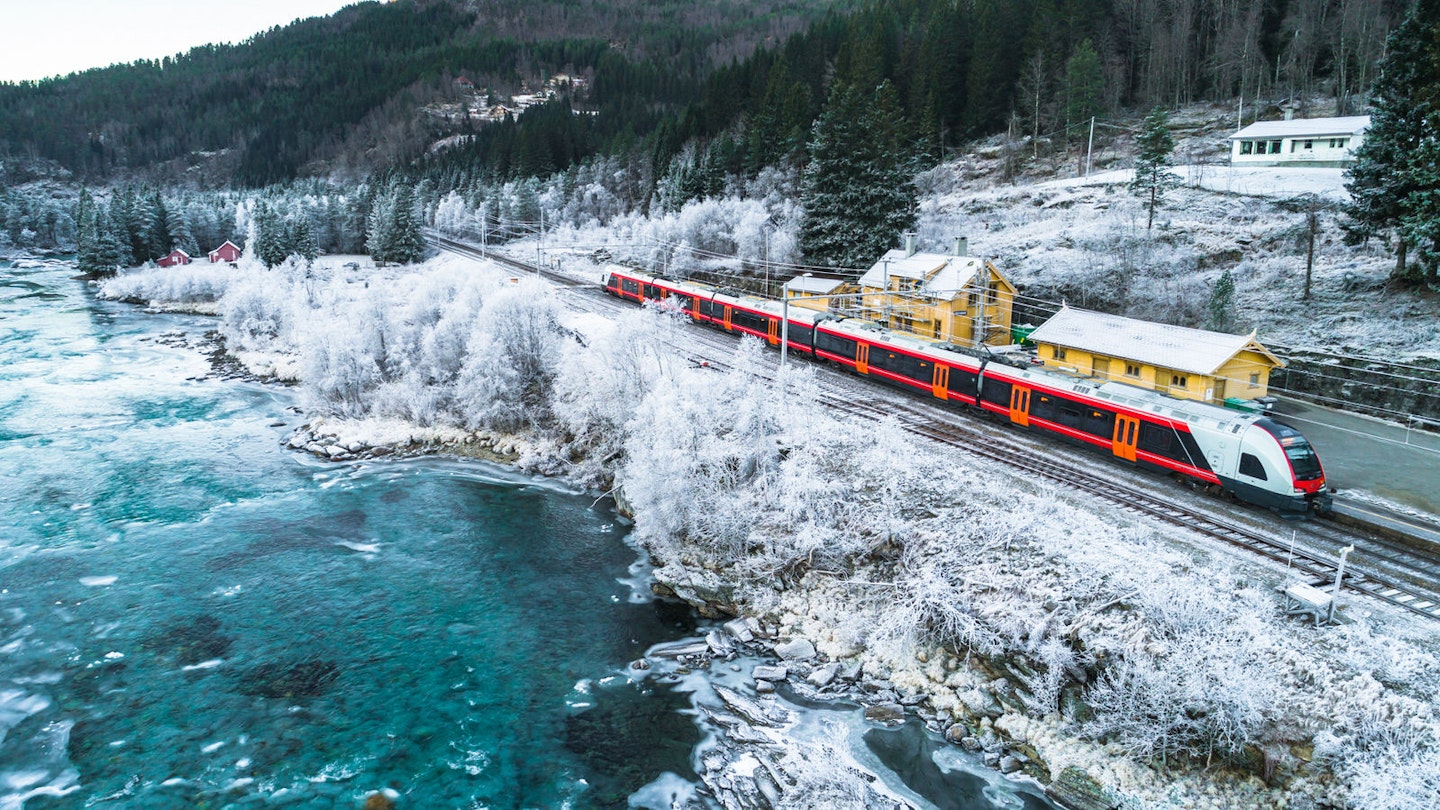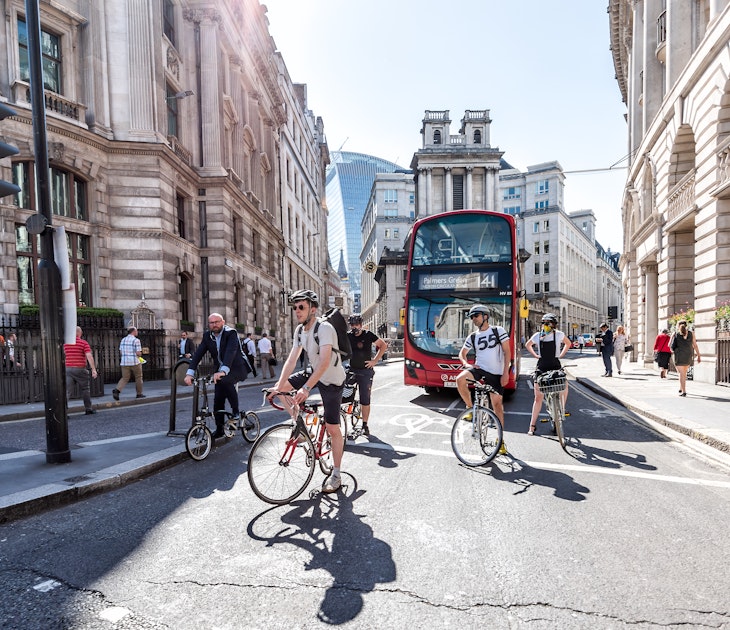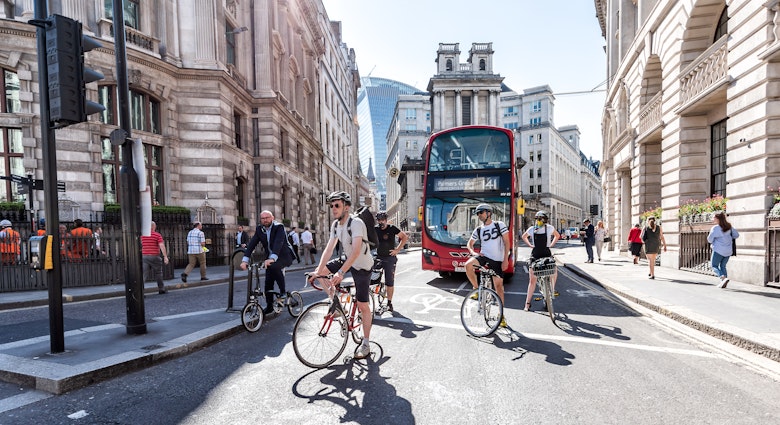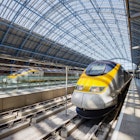We’re somewhere on the Hardangervidda plateau, on one of the world’s highest stretches of railway tracks, and we appear to have stopped. I say that with no great certainty because we’re in the middle of a white-out.
Having just left Norway’s most elevated train station, the Oslo to Bergen train may or may not be continuing its astonishing progress across a desperately inhospitable landscape. By the time we get here, I am simply in awe this railway is here at all.
Editor's note: While the COVID-19 pandemic has disrupted travel plans, we’re continuing to cover the world and all its fascinating cultures in the hope that it will inspire your future travels.
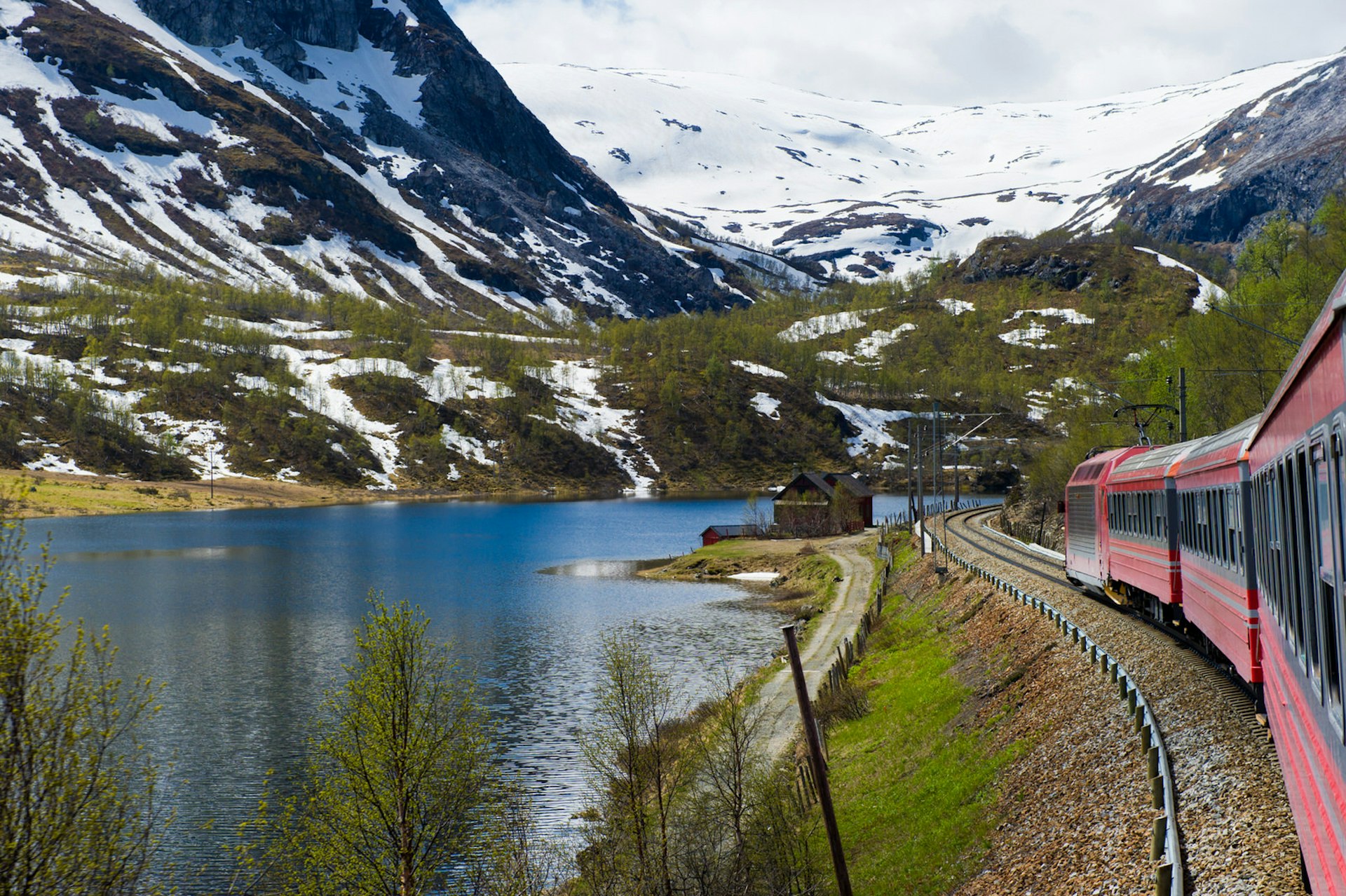
Norwegians, as visitors quickly learn, don’t mess about when it comes to getting around. Mountains made of seemingly impenetrable gneiss rock are simply one more thing to go straight through. Anywhere else, the Bergensbanen, or Bergen Line, would be heralded as a wonder of the world. Here, it’s a matter-of-fact way of linking the nation’s two most important cities.
But a wonder it surely is. And, unlike some things in Norway, it can be done on a relatively small budget.
I had wanted to ride the Bergensbanen ever since taking the train from London to Oslo several years ago. That journey involved one night on a bench in Brussels Midi station, which gave me plenty of time to ponder alternatives to the long train trip, which at the time included the now-defunct Newcastle to Bergen sea route.
Had I done that, I would have taken the Bergensbanen to Oslo after a long sea crossing. I might have missed my chance to do that, but I wasn’t going to miss taking the train over the mountains the next chance I got.

The Bergensbanen runs for 308 miles, taking six and a half hours to cross some of Europe’s most inhospitable terrain. It was built between 1875 and 1909 and, as you might expect for a railway that climbs to 1200m, building the line was not easy.
More than 180 tunnels had to be carved out of the gneiss, winter storms had to be negotiated and putting funding in place for what appeared an impossible task was difficult. But the engineers and navvies working on the project found a way, and we should be grateful to them.
10 of the world’s most amazing train journeys
This is the second year running I’ve been in Oslo in November and it is a glorious time to be in the Norwegian capital. Autumn colours are everywhere and the cool air means everyone rugs up in woollies, except for angelic-looking children in snow suits. The sun shines crisp and clear and the city’s best attractions look fantastic, from the stupendous Oslo Opera House to the museums of Bygdøy. It’s just the sort of weather for a train ride.
The common gripe about Oslo is the cost. It is an expensive city, especially if you have designs on eating and drinking out. Of course, you could do what I did and eat a lot of sausages which cook on hot rollers in 7-11 stores across the city.
For roughly the same amount as a pizza and a glass of beer (Nkr299), you can buy a minipris one-way ticket on the morning train to Bergen. I was on it one Thursday morning as it left Oslo at 8.11am and headed through the capital’s commuter belt to Drammen, the first major stop. From here the line begins to head into wilder land.
The train follows the course of valleys and rivers, seemingly growing ever wider and faster-flowing. Mountains started to pop up on the horizon, and as I turned to look at them I realised I was always missing a better view on the other side. If you’re lucky the train will be quiet enough to swap sides to take advantage of the best views.
We’d left Oslo in bright sunshine but Alpine conditions soon prevailed. As we climbed – the train displays and station signs proudly showing just how high the train was going – the snow on the ground got heavier.
The train guard stopped for a cigarette at each stop, and a group of teenage boys in our carriage worked out that this meant five minutes for a snowball fight. At Finse, the highest station on the line we are at 1222m; 244m above the highest point in England.

The line climbs to 1237m, a mere 107 metres below the height of Ben Nevis. Not that it doesn’t feel like we’re high up: the views of the snowy plateau stretch for miles, and between Finse and Myrdal the train bashes effortlessly through a white-out.
Once over the top and heading downhill the climate changes astonishingly. Myrdal is clearly on the maritime coast of Norway, milder and damper than what’s come before. The only branch line on the route, the Flåmsbana to, er, Flåm leaves from here.
It is one of several stations on the line where no roads lead. Anyone (sadly not me) on the Norway in a Nutshell tour gets off here for another train, then a combination of boat and bus to get to Bergen. For me, there were enough tumbling waterfalls, green forests and edging along dramatic fjords to make me sad I wasn’t going further.
This journey finished up in Bergen, which was wet, cold and a good place to find a bar and to settle in for the night. This being Norway, you don’t settle in for too long anywhere that costs money, but I did my best.

The Bergen Line is a journey that will live long in my memory. If you haven’t done it, you can’t say for sure it’s not the world’s most beautiful train ride (though others, including one revered overnight route in the UK, also bid for this title). Then again, looking at the map, rails go a lot further north in Norway. One journey leads to another.
How to do it yourself
How do I get tickets?
Tickets can be purchased up to 90 days in advance from the Vy website, the primary train operator in Norway. Tickets do sell out in advance, especially during holidays and busy periods, so it makes sense to book ahead of departure. You can also buy tickets at Oslo S (Central Station) or Bergen Station from the vending machines or ticket office.
How do I buy a minipris ticket?
Minipris tickets are discounted, cheap fares that can be bought in advance, though these often sell out fast. The official website now lists the cheapest ticket first on its fares page, so if any are available, you’ll see them there.
How much do tickets cost?
Tickets range from approx Nkr300 (off-peak and non-busy season) to Nkr1000.
How many trains run from Oslo to Bergen per day?
Three trains run from Oslo S to Bergen per day, departing the station at around 8.30am, midday and 3.45pm. Meanwhile, four trains ply the reverse route from Bergen to Oslo S each day, leaving at roughly 8am, midday, 4pm and 11pm. Check the Vy website for the most up to date train times.
Which side of the train is best to sit on?
A tricky question! The truth is both sides of the train offer wonderful views and whichever side you end up on you won’t feel like you’re missing out. However, the general consensus is that when travelling from Oslo to Bergen sitting on the left side of the train (facing south) offers mildly better views (rows are arranged in fours, with two seats on either side of the carriage) – though the debate rages on ...
You might also like:
Lonely Planet's weekly quiz: trains of the world
How sustainable are planes, trains and coaches on top of European routes?
Europe's best night trains
This article was first published in November 2010 and was updated in January 2021.

